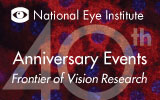Statistics and Data
Citations and Abstracts from April 2004 Archives of Ophthalmology
The Prevalence of Refractive Errors Among Adults in the United States, Western Europe, and Australia
The Eye Diseases Prevalence Research Group
Abstract
Objective: To estimate the prevalence of refractive errors in persons 40 years and older.
Counts of persons with phakic eyes with and without spherical equivalent refractive error in the worse eye of +3 diopters (D) or greater, -1 D or less, and -5 D or less were obtained from population-based eye surveys in strata of gender, race/ethnicity, and 5-year age intervals. Pooled age-, gender-, and race/ethnicity- specific rates for each refractive error were applied to the corresponding stratum-specific US, Western European, and Australian populations (years 2000 and projected 2020).
Six studies provided data from 29 281 persons. In the US, Western European, and Australian year 2000 populations 40 years or older, the estimated crude prevalence for hyperopia of +3 D or greater was 9.9%, 11.6%, and 5.8%, respectively (11.8 million, 21.6 million, and 0.47 million persons). For myopia of -1 D or less, the estimated crude prevalence was 25.4%, 26.6%, and 16.4% (30.4 million, 49.6 million, and 1.3 million persons), respectively, of whom 4.5%, 4.6%, and 2.8% (5.3 million, 8.5 million, and 0.23 million persons), respectively, had myopia of -5 D or less. Projected prevalence rates in 2020 were similar.
Refractive errors affect approximately one third of persons 40 years or older in the United States and Western Europe, and one fifth of Australians in this age group.
Archives of Ophthalmology 2004;122:495-505
